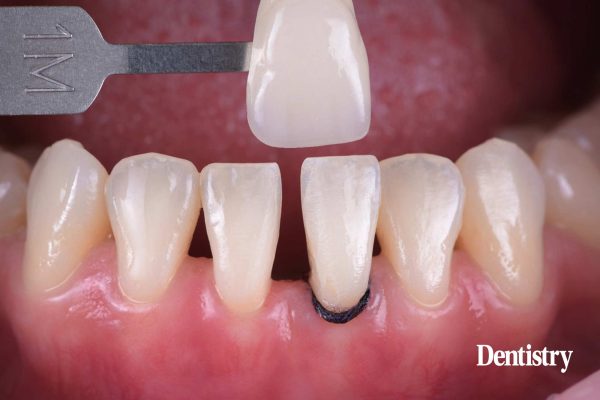Ting-Huan Lai, Cheng-Han Li and Sharon Chou show how the dual ceramic-polymer network structure of Vita Enamic allow non-prep veneers with the wall thicknesses of a contact lens to be technically created with CAD/CAM.
Manual layering of non-prep veneers on refractory dies is a time-consuming. It’s also a technology and cost-intensive, method of fabrication.
Until now, it has been virtually impossible to fabricate these delicate restorations using CAD/CAM. This is due to the brittleness of ceramic materials.
With wall thicknesses of only 0.2mm, all-ceramic CAD/CAM materials often have chipped edges after the grinding process.
In the following report, we show how the dual ceramic-polymer network structure of Vita Enamic (Vita Zahnfabrik) allows non-prep veneers with the wall thicknesses of a contact lens to be technically created with CAD/CAM.
Diastema in the lower jaw
A 28-year-old patient came to the practice because he was dissatisfied with the aesthetic appearance of his lower anterior teeth.
The clinical examination showed a pronounced diastema between his middle anterior teeth.
The patient refused orthodontic treatment due to the time and cost involved. The preparation and loss of healthy tooth substance were out of the question for him.
The manual fabrication of non-prep veneers on refractory dies proved to be too expensive for the young patient as well. For this reason, economical and time-efficient CAD/CAM supported fabrication of the delicate veneers from the hybrid ceramic Vita Enamic was chosen.
Tooth shade determination and CAD
Before the optical scan, the tooth shade was determined with the Vita Toothguide 3D-Master (Vita Zahnfabrik). The tooth shade 1M1 was determined for the two central incisors, and the corresponding Vita Enamic blank was selected.
For the optical scan with the Cerec Omnicam (Dentsply Sirona), a tooth cleaning was performed. The cervical areas of LL1 and LR1 were made detectable with retraction threads and scan powder was applied. The non-prep veneers were then designed using the Cerec Premium software (Dentsply Sirona).
Wafer-thin grinding result
The hybrid ceramic Vita Enamic consists of a structure-sintered glass-ceramic matrix (86% by weight), which is then infiltrated with a polymer (14% by weight). The polymer network makes the hybrid ceramic elastic, enabling reconstructions to be made with very thin walls that also exhibit high edge stability.
The hybrid ceramic blank was processed with the Cerec MC XL . This is a grinding unit (Dentsply Sirona). It was processed until extremely delicate microveneers with wall thicknesses of 0.2mm were produced.
Traditional CAD/CAM ceramics with such low wall thicknesses often have chipped edges after the CAM process, as they are highly brittle. In the next step, the hybrid ceramic veneers were separated from the attachment with a fine diamond.
Integration and final result
The try-in showed the outstanding chameleon effect of the wafer-thin restorations. Thanks to the dominant ceramic content of the hybrid ceramic, the veneers could be etched with hydrofluoric acid and silanised.
Sandblasting, as is necessary with CAD/CAM composites, would have most likely destroyed such a delicate restoration. After renewed thread placement on LL1 and LR1 and phosphoric acid etching, the two microveneers could be successively attached in a fully adhesive manner.
After final removal of the composite cement residues and careful polishing with the Vita Enamic polishing set, a highly aesthetic result was achieved that was minimally invasive and efficient.
This article was first published in Digital Dental Magazin, 2/2019, Flohr New Media, Germany.


